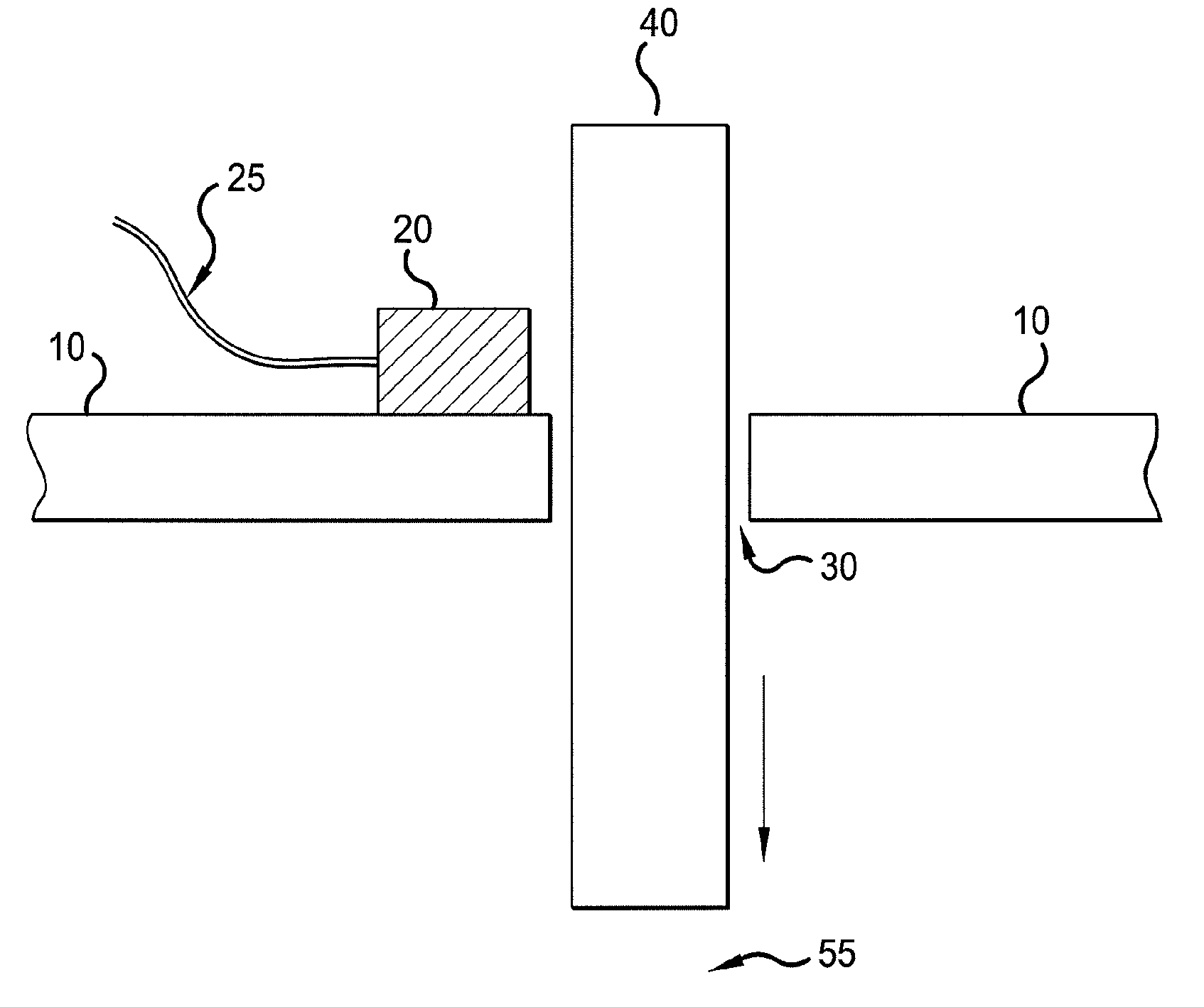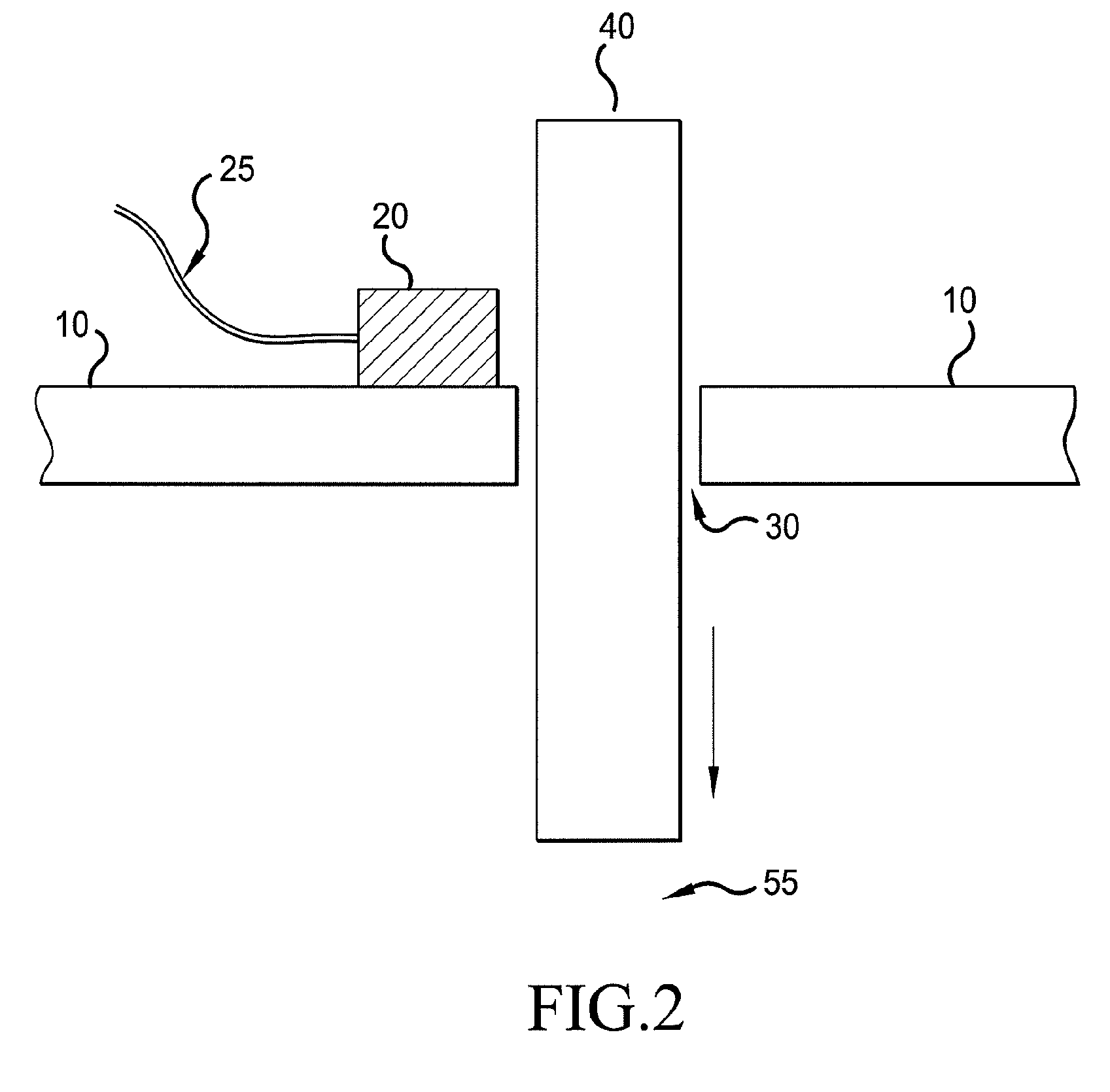Proximity sensor for brake wear detection
a technology of wear detection and proximity sensor, which is applied in the direction of instruments, analogue processes for specific applications, electric/magnetic computing, etc., can solve the problems of inability to remotely perform the process of measuring steel rods, labor-intensive manual measurement process, and high cos
- Summary
- Abstract
- Description
- Claims
- Application Information
AI Technical Summary
Benefits of technology
Problems solved by technology
Method used
Image
Examples
first embodiment
[0015]FIG. 2 shows a braking system which includes a sensor known as a reed switch 20 mounted on a bracket 10. The reed switch senses the location of a wear pin 40 or steel rod. The wear pin 40 passes through a hole 30 in the bracket 10 near brake disc stack 55. The wear pin 40 is used to measure the height of the brake disc stack 55. The location of the wear pin 40 corresponds with the height of the brake disc stack 55 and the wear of the brake disc stack 55. The wear pin 40 is magnetized so that a reed switch 20 can detect its presence. The reed switch 20 may be located on the outer surface of the bracket 10 while the brake disc stack 55 is located inside the inner surface of the bracket so that the reed switch 20 is oriented to measure the presence of the wear pin 40 protruding outside of the bracket 10. The reed switch 20 is securely fastened to the bracket 10 with the reed switch 20 located on the side of the bracket 10 opposite of the brake disc stack 55; however, the reed swi...
third embodiment
[0024]FIG. 4 shows the present invention. FIG. 4 includes a wear pin 50, a bracket 10 and a sensor 22. The sensor 22 is physically touching the wear pin 50 to measure its movement, such as a micro switch 22. The micro switch 22 includes as arm 23 that moves as the wear pin 50 moves. The amount the arm 23 moves corresponds to the change in height of the brake disc stack. As the brake disc stack 55 wears down, the micro switch 22 detects that the wear pin is moving in a direction that corresponds with the decrease in height of the brake disc stack 55. Upon moving to a predetermined position, the micro switch 22 sends a warning signal indicating that the height of the brake disc stack 55 has decreased a predetermined amount.
[0025]The difference between the third embodiment and the first and second embodiments is that the micro switch 22 of the third embodiment is physically touching the wear pin 50 while in the first and second embodiments, the reed switch does not touch the wear pin o...
PUM
 Login to View More
Login to View More Abstract
Description
Claims
Application Information
 Login to View More
Login to View More - R&D
- Intellectual Property
- Life Sciences
- Materials
- Tech Scout
- Unparalleled Data Quality
- Higher Quality Content
- 60% Fewer Hallucinations
Browse by: Latest US Patents, China's latest patents, Technical Efficacy Thesaurus, Application Domain, Technology Topic, Popular Technical Reports.
© 2025 PatSnap. All rights reserved.Legal|Privacy policy|Modern Slavery Act Transparency Statement|Sitemap|About US| Contact US: help@patsnap.com



